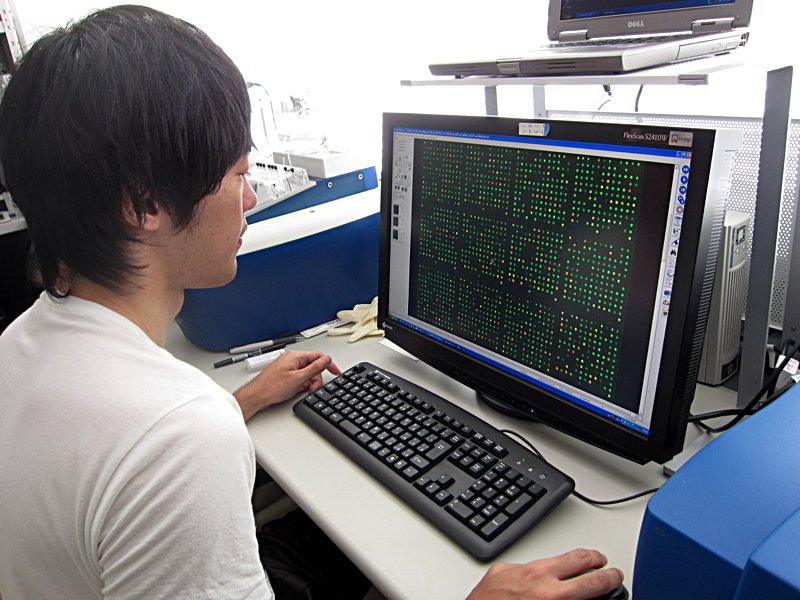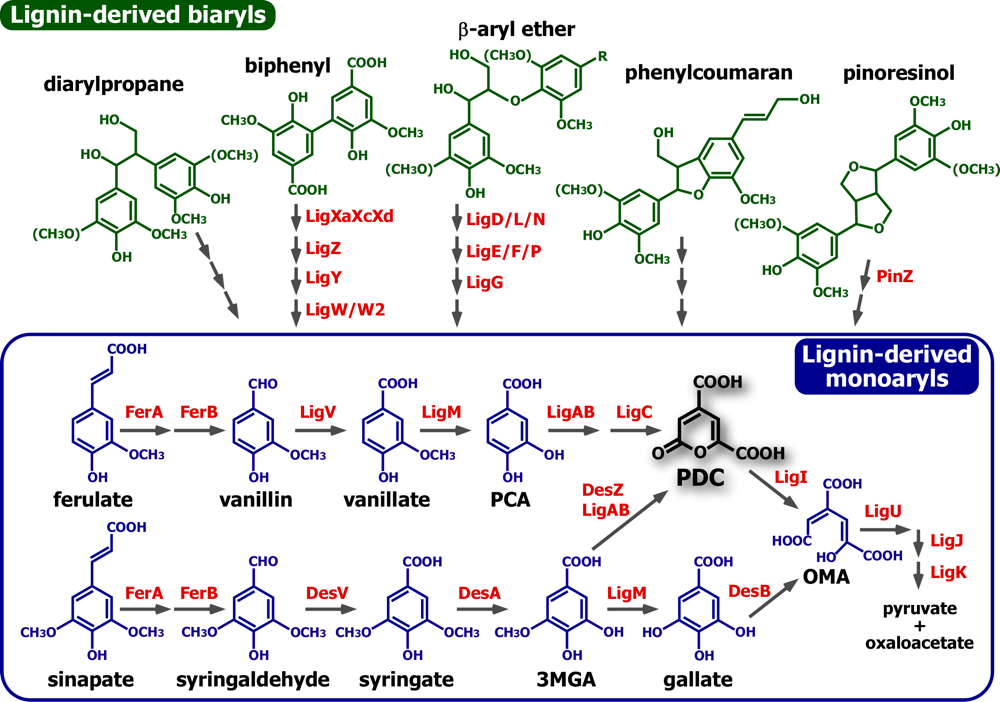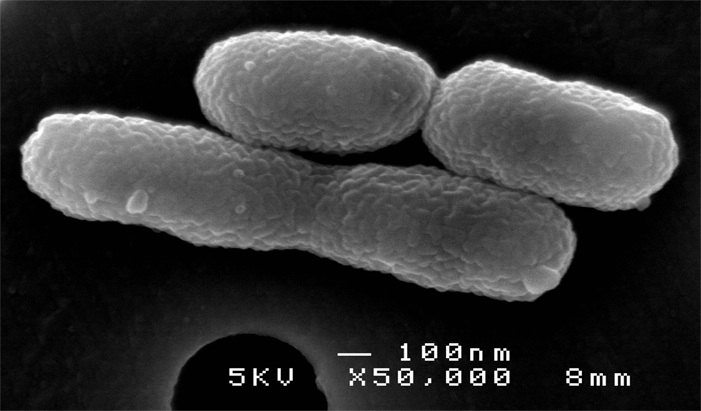Research
Microbial Metabolism

Eiji Masai
Professor

Naofumi Kamimura
Associate Professor

Laboratory of Microbial Metabolic Engineering focuses on the bacterial catabolism of lignin-derived aromatic compounds. Lignin, a major component of plant cell walls, is produced from hydroxycinnamyl alcohols through radical coupling. Since lignin is the most abundant aromatic substance in nature, the potential for obtaining industrially valuable chemicals from lignin is exceptionally high. For this purpose, microbial functions degrading lignin-derived aromatics are crucial. We have extensively characterized Sphingobium sp. strain SYK-6 as one of the best characterized lignin-degrading bacterium. This strain is capable of utilizing various types of lignin-derived biaryls and monoaryls as the sole source of carbon and energy. One of our goals is to understand how Sphingobium sp. strain SYK-6 and other lignin-degrading bacteria catabolize a wide variety of lignin-derived aromatics. Another goal is to establish bioprocesses for the conversion of lignin into useful chemicals. Microbial functions for the catabolism of lignin-derived compounds may also be useful for lignin modification in plants, potentially favorable for biofuel production.
- Bacterial catabolism of lignin-derived aromatic compounds
- Transcriptional regulation of lignin-degrading genes
- Conversion of lignin into useful chemicals

Catabolic pathway for the degradation of lignin-derived aromatics by Sphingobium sp. strain SYK-6. An intermediate metabolite, 2-pyrone-4,6-dicarboxylic acid (PDC) is useful in the production of biodegradable and high-functional polymers.

Scanning electron micrograph of Sphingobium sp. strain SYK-6.